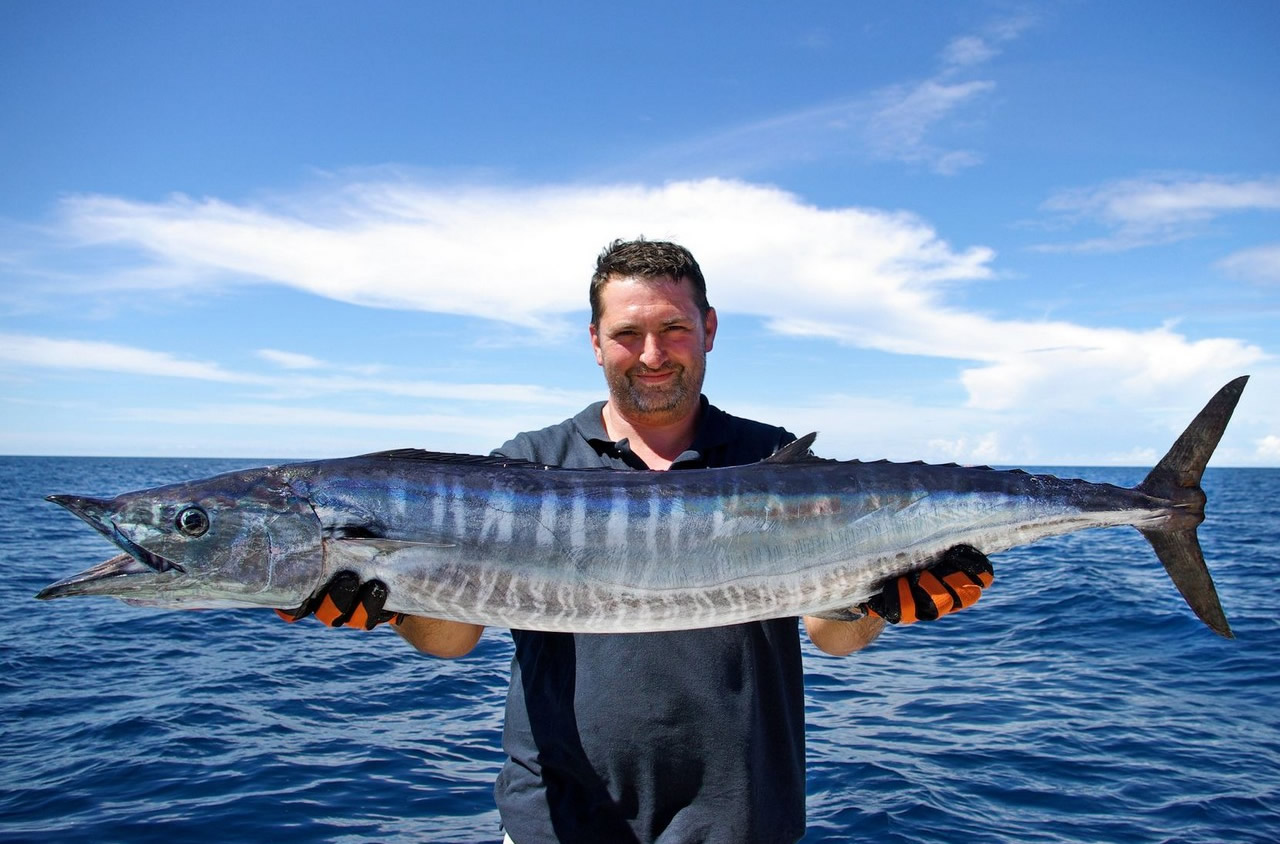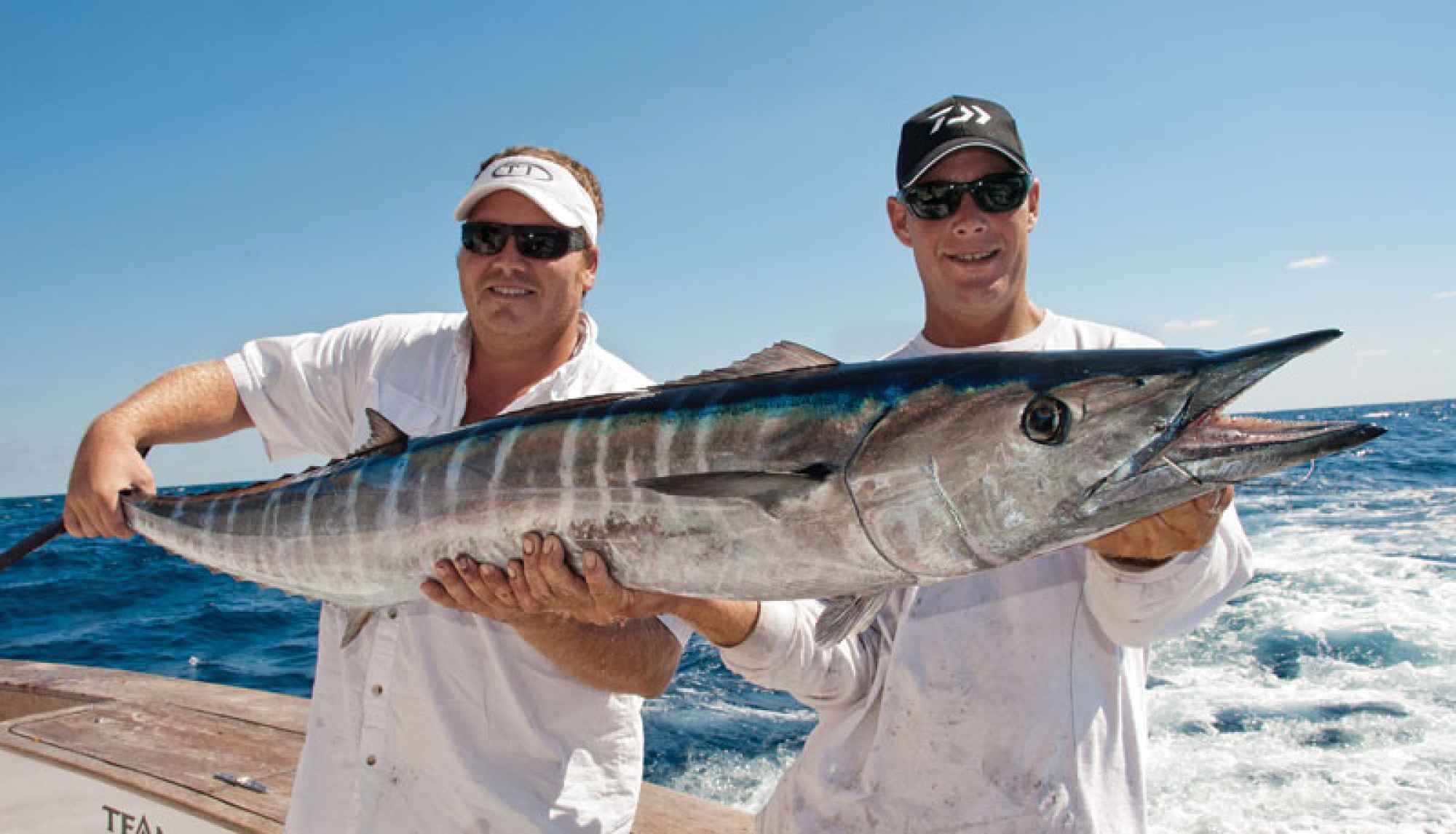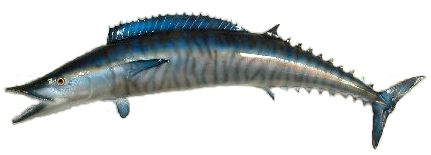
Acanthocybium solandri
FAMILY
Scombridae
TAXONOMY
Acanthocybium solandri (Cuvier, 1832), type locality unknown.
OTHER COMMON NAMES
French: Thazard-bвtard; Spanish: Peto.
PHYSICAL CHARACTERISTICS
Maximum size 83 in (210 cm) fork length weighing 183 lb (83
kg) or more. Body very elongate, fusiform, and only slightly
compressed. Mouth large with strong, triangular, compressed,
and finely serrate teeth closely set in a single series. Snout approximately
as long as rest of head. Gill rakers absent. Two
dorsal fins, the first consisting of 23–27 spines, the second with
12–16 rays followed by eight or nine finlets. Anal fin of 12–14
rays followed by nine finlets. Body covered with small scales.
Swim bladder present. Vertebrae, 62–64. Back iridescent bluish
green, sides silvery with 24–30 cobalt-blue vertical bars.
DISTRIBUTION
Tropical and subtropical waters of the Atlantic, Pacific, and Indian
oceans including the Caribbean and Mediterranean seas.
HABITAT
Epipelagic zone ocean.
BEHAVIOR
Frequently solitary or forming small, loose aggregations rather
than compact schools.
FEEDING ECOLOGY AND DIET
Piscivorous, preying on pelagic fishes such as scombrids, porcupinefishes,
flyingfishes, herrings, scads, and lanternfishes and
on squids.
REPRODUCTIVE BIOLOGY
Spawning seems to extend over a long period. Fish in different
maturity stages are frequently caught at the same time. Fecundity
is believed to be quite high; 6 million eggs were estimated
for a 52-in (131-cm) female.
CONSERVATION STATUS
Not threatened.
SIGNIFICANCE TO HUMANS
There do not appear to be any organized fisheries for wahoo,
but it is greatly appreciated when caught. FAO catch statistics
for 1991–2000 show catches of 2,121–3,460 tons (1,924–3,139
metric tons) per year by 30 countries. In many areas (Caribbean,
Hawaii, Great Barrier Reef), wahoo is more important as a
gamefish taken on light to heavy tackle through surface trolling
with spoons, feather lures, or strip bait. The all-tackle gamefish
record is a 159-lb (71.9-kg) fish taken off Baja California.
Other popular Animals
Photo Gallery of - Wahoo





 Animalia Life
Animalia Life